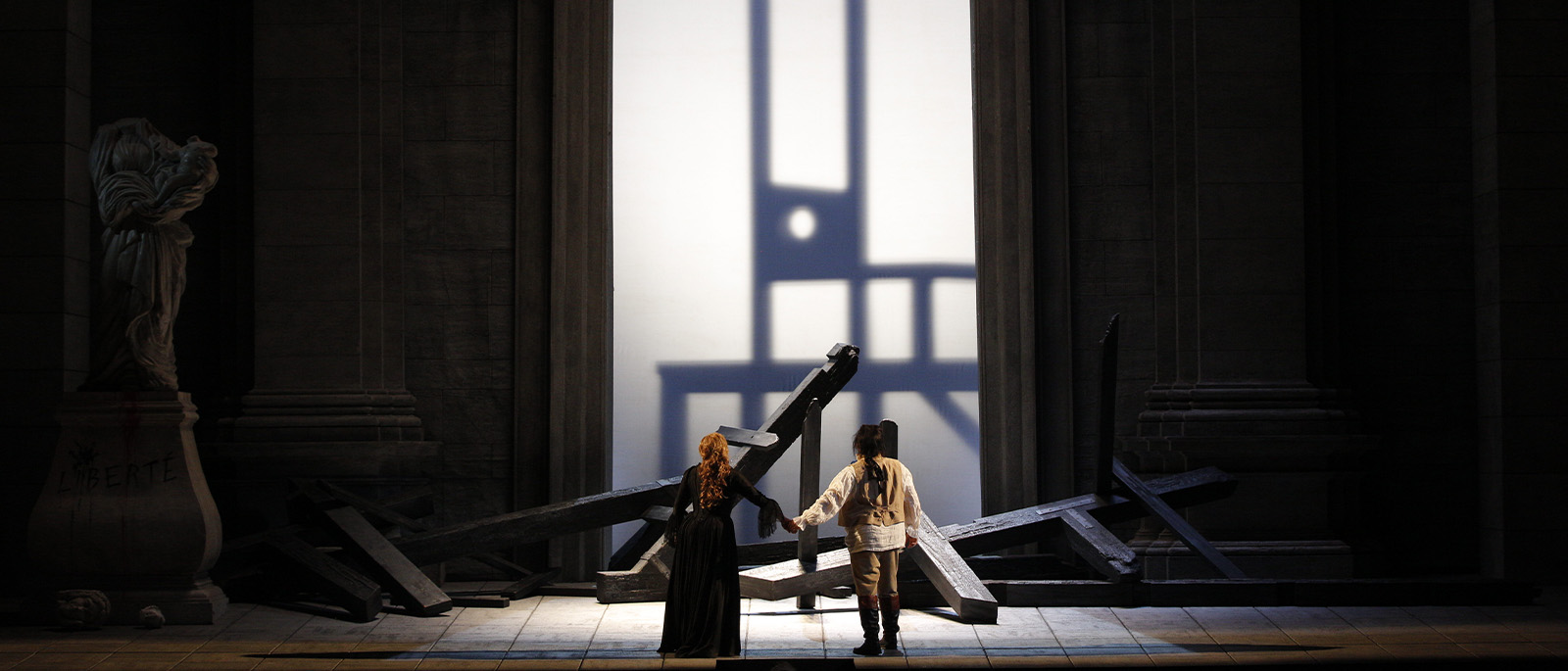
UMBERTO GIORDANO
Andrea Chénier
Single tickets will go on sale to the general public in June 2025.
Patrons and Subscribers are eligible to purchase single tickets now. Please login to continue.
Overview
Giordano’s passionate tragedy stars tenor Piotr Beczała as the virtuous poet who falls victim to the intrigue and violence of the French Revolution. Following their celebrated recent partnership in Giordano’s Fedora, Beczała reunites with soprano Sonya Yoncheva as Chénier’s aristocratic lover, Maddalena di Coigny, with baritone Igor Golovatenko as Carlo Gérard, the agent of the Reign of Terror who seals their fates. Daniele Rustioni takes the podium to lead Nicolas Joël’s gripping staging.
Production a gift of The Annenberg Foundation
Revival a gift of Barbara Augusta Teichert
Languages
Languages sung in Andrea Chénier
Sung In
Italian
Titles
Title languages displayed for Andrea Chénier
Met Titles In
- English
- German
- Spanish
- Italian
Timeline
Timeline for the show, Andrea Chénier
Estimated Run Time
3 hrs 10 mins
-
House Opens
-
Act I
30 mins
-
Intermission
30 mins
-
Act II
30 mins
-
Intermission
30 mins
-
Acts III and IV
70 mins
-
Opera Ends
Cast
Select a date from the dropdown to filter cast by date of performance
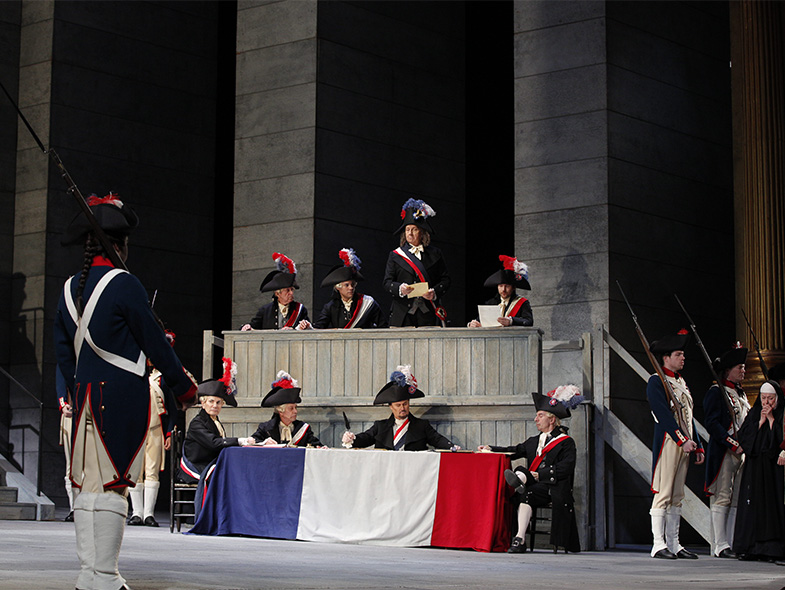
World premiere: Teatro alla Scala, Milan, 1896. Giordano’s great tragedy blends verismo’s focus on the raw emotions of everyday people with the spectacle of historical grand opera. The marriage of sound and text is exemplary. More than anything, Andrea Chénier relies on engrossing performances from its lead performers for success, but the central characters are placed within an effective, larger musical canvas that bolsters the compelling star turns, rather than relying on them wholesale.
Creators
Composer Umberto Giordano (1867–1948) was born in southern Italy and studied in Naples. Andrea Chénier was his first success, followed swiftly by the fervent melodrama Fedora. Luigi Illica (1857–1919), the opera’s librettist, was a colorful poet who had also written the text for Catalani’s La Wally, though his greatest fame would rest on his collaborations with Giacomo Puccini, including for La Bohème and Tosca.
Production
Nicolas Joël
Set and Costume Designer
Hubert Monloup
Lighting Designer
Duane Schuler
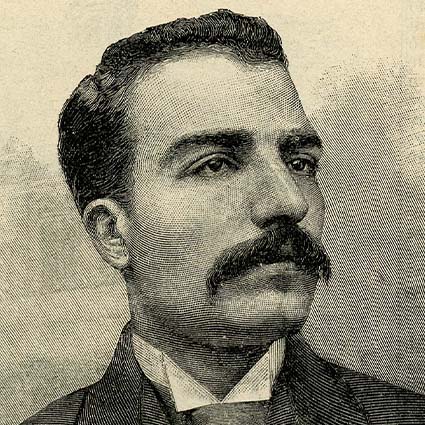
Composer
Umberto Giordano
Setting
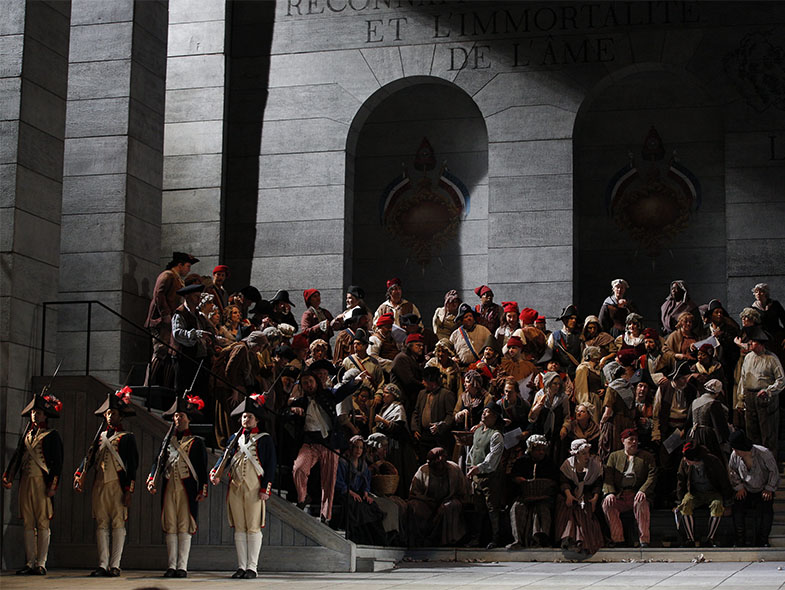
Andrea Chénier is set in Paris amid the drama and turmoil of the French Revolution. By focusing on individuals caught up in a wildly dramatic moment in history, the opera manages to be both human and epic in scope. The title role is based on a fanciful interpretation of the life and death of the poet André Chénier (1762–94). The characters of Maddalena de Coigny and the servant-turned-revolutionary Gérard, on the other hand, are dramatic inventions.
Music
Giordano’s score is lush and stirring, with emotions expressed powerfully and immediately by the orchestra and by the singers. In Act I, for example, the title character’s famous solo “Un dì, all’azzurro spazio” pulls the listener directly into the world of Chénier. The soprano must produce an amazing depth of expression in her great Act III aria, “La mamma morta,” and the baritone has the thrillingly impressive solo “Nemico della patria.” The tenor and soprano also express their love in two of the most charged duets in Italian opera, one in Act II and another as they face the guillotine together in the opera’s finale.
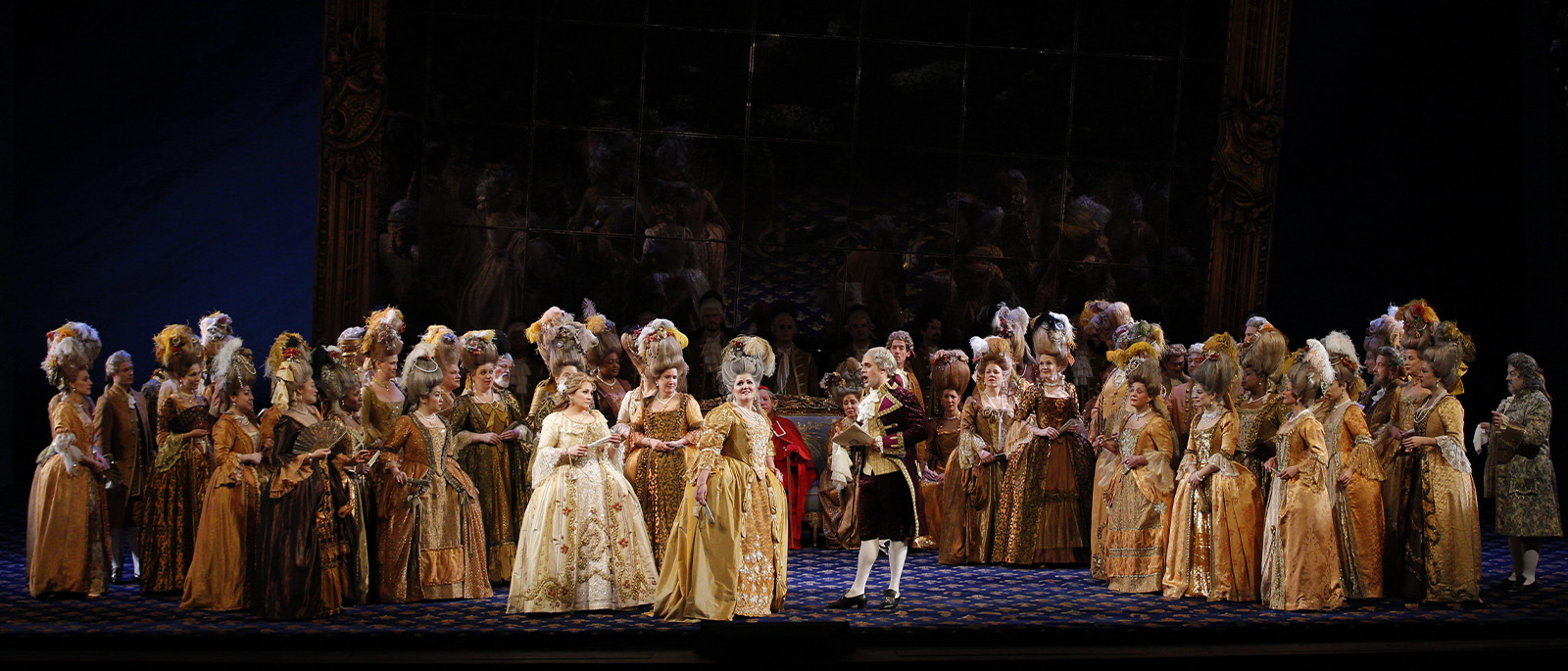
Share This Page
Social Share
Copied